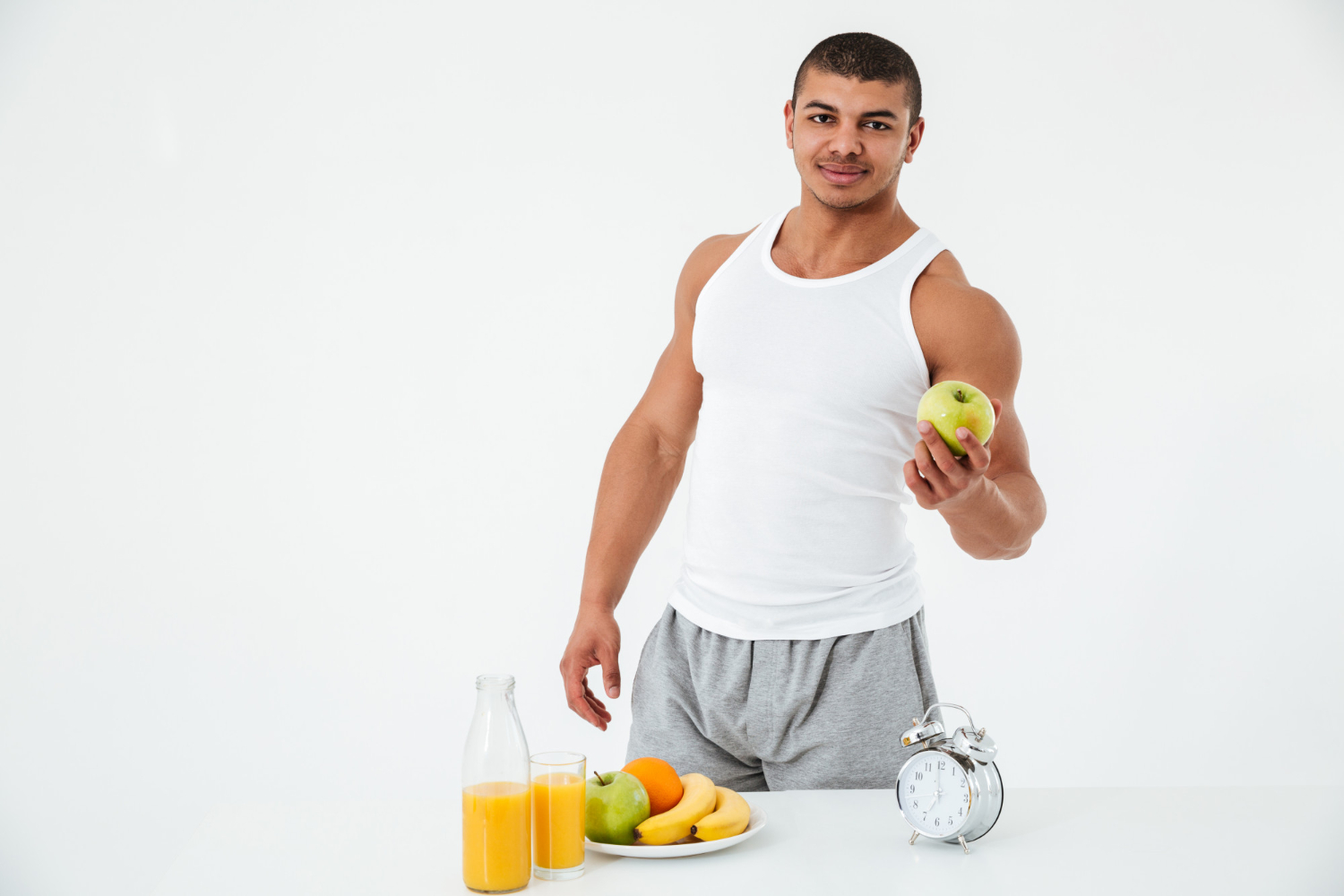In bodybuilding, a cutting cycle means the time when you go through the process of losing fat from your body. You must follow a specific diet plan to get rid of the excess fat in your body.
During the time of bodybuilding, you gain muscle and fat in your body. But removing the excess fat from your body is the main goal of the cutting cycle. You can do so with a specific exercise and diet plan.
Hard training and supplements are necessary, but that is not sufficient. The diet plan plays a crucial role in cutting, as you want to retain the hard-earned muscle while getting rid of excess fat. The food you take should be high in protein and low in carbs, or an easy source of calories. At the same time, you will have to make that you get enough calories to get you going throughout the day.
What is a Cutting Cycle Diet?
Professional bodybuilders follow a cutting diet to lose excess fat just before any major bodybuilding competition. It involves reducing the amount of fats, carbs, and protein intake in your regular diet plan to create a deficit.
Once you manage to create a deficit in your diet, your body gets the required energy from the excess fat stored in your body. So, you start to lose stored fats in your body.
The main goal of a cutting cycle diet is to burn fat, but not keep you dry on calories. Because it is the easiest source, your body gets the required energy to keep you going for the rest of the day.
Consuming enough calories helps you preserve muscle mass while keeping enough energy and performance. How long is a cutting cycle? Well, it varies from person to person and your goal. But during that time, you would have to follow the specially prepared diet chart.
So, let’s see what essential foods you need to consume in your cutting cycle.
Essential Foods That Boost Fat Loss in a Cutting Cycle
An ideal cutting cycle diet plan should include lean protein sources that contain zero or extremely low fat percentage. Besides, vegetables with high fibre, complex carbs are essential.
1. Lean Proteins
Professional bodybuilders consider chicken breast, turkey, egg whites, and fish to be the main sources of lean protein. Consuming lean protein helps in the preservation of muscle. Moreover, you don’t gain additional fat from the food.
Additionally, when you consume lean protein, your body uses calories to digest the protein. So, in the process of digesting the protein, you lose body fat. This is called the thermic effect of foods.
Research suggests that the thermic effect of protein is higher (20 to 30%) than carbohydrate (5 to 10%) and fat (0 to 3%). It means that a protein source with 100 calories with the thermic effect of 30% would end up consuming 70 calories in your body.
2. Fibrous Vegetables
If you keep fibrous vegetables in your advanced cutting cycle diet, it creates a feeling of fullness. Besides improving digestion, vegetables with high fibre don’t make you feel hungry quickly. It helps in reducing your calorie intake and reducing body fat through exercise.
Combining fibrous vegetables with other nutrient-rich foods will keep you energised during the cutting cycle.
Broccoli, spinach, kale, and asparagus are some of the vegetables that are rich in healthy fibres.
3. Complex Carbs (in Moderation)
If you want a food that provides you with energy slowly, then a complex carbohydrate can be a good option. Complex carbohydrate sources like oats, quinoa, brown rice, and sweet potatoes take more time to digest than the simple form of carbohydrate sources.
Besides, these foods are rich in nutrients, which are helpful in the cutting cycle. As complex carbohydrates take more time to digest, they slowly release energy that you may require throughout the day.
Besides, you don’t feel hungry for a long time after an intense workout session. However, the complex carbohydrate needs to be consumed in moderation; otherwise, you might experience digestive issues.
4. Healthy Fats
Eating fat to lose body fat? Does it sound confusing? Well, there is a solid reason behind eating healthy fats even during the cutting cycle.
If you do not eat enough fat, it will reduce testosterone and IGF-1 levels in your body. To preserve muscle mass, these hormones help a lot.
So, you’d better consume healthy fats from avocado, olive oil, fatty fish, and others. These sources of healthy fats help to maintain hormone balance and also brain function. Moreover, it keeps you satiated to help you during the cutting cycle.
5. Low-Calorie Fruits
As you are training hard with heavy weights, and eating protein, carbohydrates, and fats, consuming vitamins, antioxidants is also important. So, you can look for low-calorie fruits that contain vitamins of different sorts.
Berries contain vitamin C, minerals, vitamin E, potassium, and other minerals that your body needs during the cutting cycle.
Similarly, eating an apple will also give you several minerals and vitamins along with antioxidants. Consume low-calorie fruits to meet the need for vitamins and also keep your calorie intake on the lower side.
6. Hydration & Metabolism Boosters
While protein, carbohydrate, and other supplements are necessary to include in the cutting cycle diet plan, keeping yourself hydrated is also necessary. Drink plenty of water to stay hydrated.
At the same time, you can take some homemade metabolism boosters to improve your metabolism and help in losing fat.
Green tea, for example, is rich in antioxidants and a small dose of caffeine. You can take 2-3 cups daily to boost your energy naturally and improve digestion.
Alternatively, drinking black coffee (without sugar or cream) in moderation increases short-term calorie burn.
Foods to Limit or Avoid in a Cutting Cycle
As you go through your cutting cycle, you should avoid some foods that might be unhealthy for you at this time. For example, processed sugar or snacks are easy sources of carbohydrates. Consuming these foods will add more fat to your body.
Fried foods, processed carbohydrates, and alcohols are some of the consumables with high levels of calories. Moreover, alcohols and other fried foods might negatively impact your liver, leading to reduced digestive capacity.
Example Cutting Diet Plan (1-Day Sample)
If you are planning to go for a cutting cycle, it’s better to have a solid diet plan. The following table will give you an idea of what you should include in your daily cutting cycle diet.
| Cutting Cycle Diet Plan | |
| Breakfast | Oats, egg whites, berries. |
| Snack | Greek yogurt, almonds. |
| Lunch | Grilled chicken breast, quinoa, broccoli. |
| Snack | Apple, peanut butter (moderate). |
| Dinner | Salmon, asparagus, mixed salad. |
| Evening | Casein protein shake. |
Table: Cutting Cycle Diet Chart
A healthy diet chart should be prepared specifically for each individual. Each individuals have different types of requirements, so different combinations of food are needed. It is better to consult a professional dietitian to prepare a chart for yourself.
Summary Recap
An ideal cutting cycle diet would be high in protein, fats, and rich in fibrous vegetables and nutrients. Proteins, fats, and complex carbohydrates keep you satiated all day. Moreover, it gives you a way to lose body fat by creating a calorie deficit.
Even those who are going through a steroid cutting cycle need a solid diet plan for optimum results.
Frequently Asked Questions
A cutting cycle can last anywhere between 6 weeks to 16 weeks. It entirely depends on your fitness goals.
A good cutting cycle is when you gradually lose the amount of body fat you need to and reach your target weight and muscle definition.
You can cut back your calorie count by 300 – 500 calories per day. Further, consume more fibres, greens, lean meat (protein), and fruits that are low in sugar content and high in vitamins.
If you have lost around 10% of your body weight and reached the muscle definition you want, you may end the cutting cycle.




